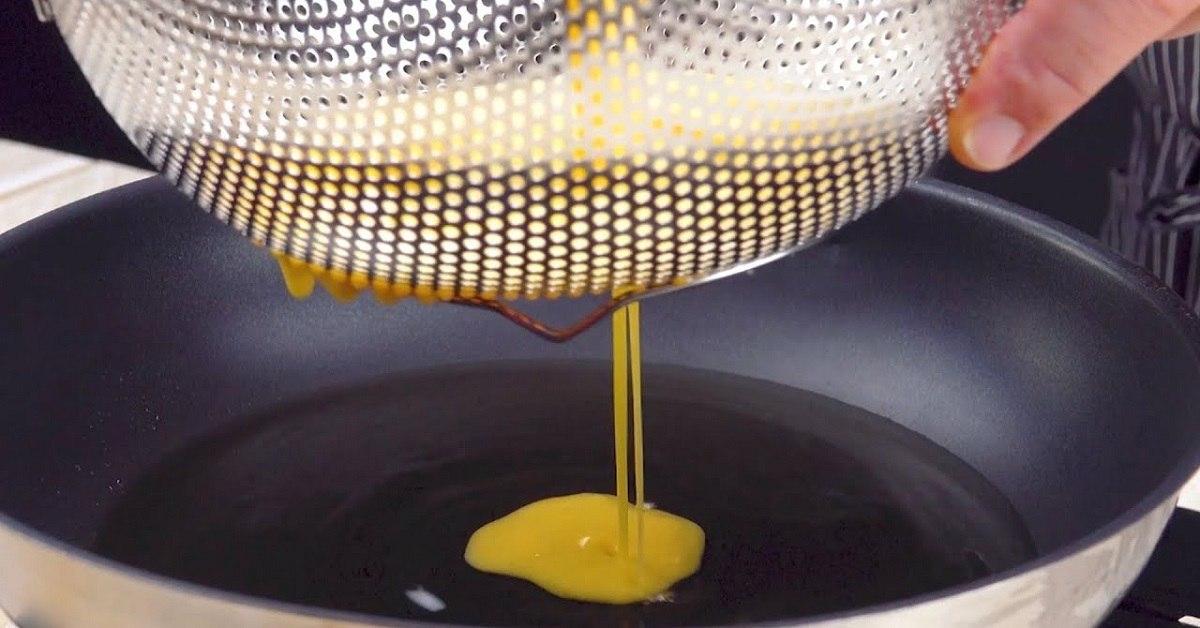How to Use a Sieve: 10 Creative Ideas

Sometimes, familiar things have unobvious applications. Having tried them once, you can no longer do things differently because they turn out to be fast, convenient, beautiful, and economical. An ordinary kitchen sieve is a vivid example of an item with multiple applications: it is your right to use it a couple of times a month exclusively for draining pasta, or you can turn it into an essential kitchen utensil.
Everything is possible with the help of a sieve: from cooking steamed dumplings to giving pastries an unparalleled fluffiness. Do not forget to use it — we will tell you how.

Stale Bread — Fresh Again
When bread becomes hard and completely loses its divine aroma, there is a way to save it. Pour water on the bottom of a pan, cut the necessary amount of bread into slices, place them in a sieve, and set it over water. Steam the bread for 5 minutes — it will regain its fragrant aroma and softness.

Perfect Eggs
To cook poached eggs, you need to make swirls in water with vinegar (2 tablespoons per pot), break an egg there, stir, and then carefully retrieve it. Although it sounds simple, in reality, the egg white bundles contaminate the container, and they are annoyingly hard to catch. To make sure that everything turns out excellently, put the kitchen sieve in the water, break the egg into it, and form a bundle with neat circular movements.
If you want to cook a very fluffy omelet, pass your whipped eggs through a sieve into a pan greased with butter while continually stirring them. The dish will turn out incredibly soft and delicate.

Airy Pastries
Always remember to sift flour — it helps get rid of lumps, dries it a little, and saturates it with air, which makes the dough homogeneous and soft. Moreover, pastry chefs recommend to pass flour through a sieve not once, but two or three times, even if it is of the highest quality and you have just bought it.

Beautiful Pies
This is easy: use a sieve to sift the cocoa powder and powdered sugar for decorating baked goods. Even a homemade tiramisu dessert looks unfinished without sprinkling; it will turn out homogeneous if you use a sieve.

Steamed Dishes
It is not necessary to own a steamer to cook steamed dishes. There are at least four ways to do this, and using a sieve is one of those. Place the sieve in the pan so that it is above the water level and cover it. Voilà! This is a great way to cook vegetables, dumplings, and grains.

Stove Protection
If you cover a pot or pan with a lid, products will immediately begin to stew; if you do not cover it, grease or splashes are likely to stain the surrounding surfaces. To resolve the issue, put a metal sieve on top — it will protect your stove and prevent your sauce from boiling over.

Frying in Oil Without Using a Deep Fryer
Even with a small amount of oil, cooking french fries will not be a problem if you use a sieve. You can fry any small-sized products this way: nuggets, onions, mushrooms, cauliflower, and others.

Making Cheese
Few people realize how tender and delicious curd cheese from kefir turns out! The same old sieve (or colander) will help you make it: line it with gauze and let the serum drain. How does this differ from the conventional method of hanging cheese in gauze? It makes it possible to install a press, like in an actual cheese processing facility. Then it turns out denser and acquires a rich taste.

Puree Soup Without Blender
A food processor is not the only means of pureeing tomatoes, squash, pumpkin, and other soft foods. Armed with a sieve and a tablespoon, you will quickly tackle this task. This method is convenient when preparing raw jam, cream soups, and sauces.

Decorating the Festive Table
Sieve is one of the rare kitchen appliances that come in handy when decorating a table and serving meals. It is convenient to use it as a basis for a bouquet (pass the flowers through the openings and place the colorful bed of flowers in a central place) or as a stand for snacks on skewers — making a kind of hedgehog.

You could apply some of these kitchen life hacks to a colander, which also stands idle most of the time. Now you should not doubt that a sieve should be a staple in every kitchen: it alone can replace a steamer, deep fryer, a mold for poached eggs, and a blender. What other uses of this kitchen utensil do you know?
